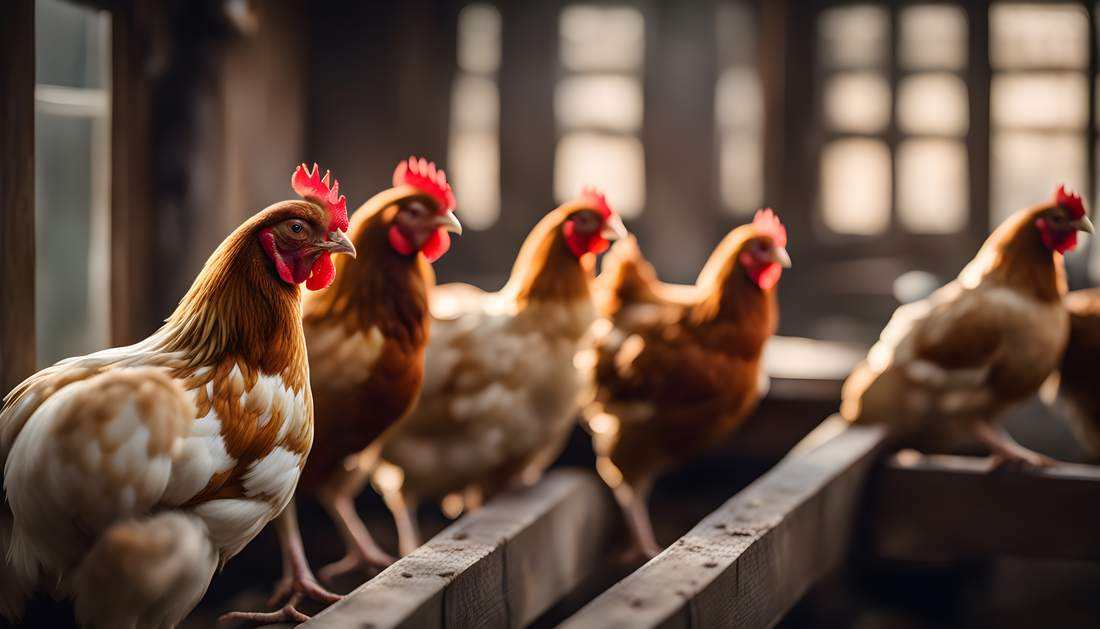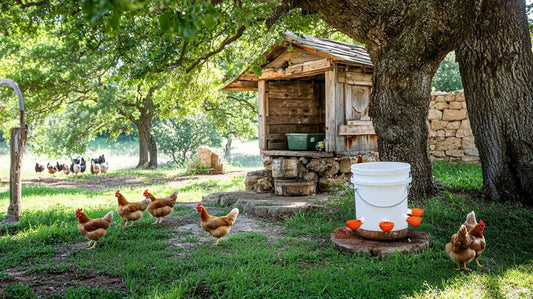A Comprehensive Guide to Feathered Flock Integration
So, you've decided to expand your backyard flock, and the excitement is palpable. But, as any experienced poultry keeper will tell you, introducing new chickens to your existing flock is not as simple as tossing them into the coop and hoping for the best. It can be a delicate and complex process.
Chickens can be territorial and hierarchical creatures, and mishandling introductions can lead to feathers flying, pecking order disputes, and stressed-out birds. To ensure a smooth integration and prevent conflicts, it's crucial to follow a detailed plan.
Here's a step-by-step guide on how to safely and effectively introduce new birds to your existing flock, preventing territorial disputes and other feathery fiascos.
1. Quarantine the Newcomers
Before even introducing your new feathered friends to the flock, it's crucial to quarantine them for at least two weeks. This is an often-overlooked, but absolutely critical, part of the process that can save you a lot of trouble down the line. This quarantine period serves several important purposes:
- Disease Prevention: It allows you to monitor the health of the newcomers and ensure they're free from any infectious diseases. This precaution is crucial to protect the health of your existing flock.
- Acclimatization: During this time, the new chickens get used to their surroundings and adjust to their new environment. They'll also become familiar with your feeding and care routines.
During this time, regularly check for signs of illness, including lice, respiratory distress, diarrhea, or abnormal behavior. All sick birds should be isolated and treated accordingly. If all new chickens remain healthy during this period, it's time to proceed to the next step.
2. Choose the Right Time
Timing is essential when introducing new birds to your flock. Just like us humans, chickens can be grumpy in the morning and not always open to making new friends. To set the stage for a successful introduction, pick a time when your chickens are most relaxed and content, typically during the late afternoon or evening. This helps reduce stress and anxiety during the initial meet and greet.
Consider the weather as well. Avoid introducing new birds during extreme heat or cold, as this can add stress to the process. Overcast days or days with mild weather are generally the best choices for introductions.
3. Establish a Separate but Visible Area
To introduce new birds, create up a separate but visible enclosure within your coop. This allows the existing flock to observe their new neighbors from a safe distance. This "peek-a-boo" approach lets chickens become familiar with each other over time and get used to each other's presence without direct contact.
To set up this area, use chicken wire or hardware cloth to create a barrier within your existing coop or run. This barrier should be sturdy enough to prevent physical contact but not so solid that it blocks the view. By allowing the two groups to see and hear each other, they can become familiar with their new neighbors without direct confrontation.
During this period, monitor both groups closely for any signs of aggression, such as aggressive pecking at the barrier. If you observe excessive aggression, it may be necessary to postpone direct interaction until tensions have eased.
4. Ensure Adequate Space
To avoid territorial disputes, it's crucial to ensure that there's plenty of space for everyone to coexist comfortably in the coop. Chicken bullying often stems from a lack of personal space. Make sure there are plenty of feeders, waterers, and roosting spots for both the existing and new chickens. This reduces competition and the chances of bullying.
In a standard coop, aim for at least 2-3 square feet of space per chicken. In the outdoor run, provide a minimum of 8-10 square feet per bird. Having ample space ensures that chickens can maintain their personal space and reduces the likelihood of aggressive behavior.
Chickens need space not only for comfort but also to engage in natural behaviors like scratching, dust-bathing, and foraging. When there's enough space, chickens are less likely to focus their energy on territorial disputes.
5. The Neutral Territory Method
Another strategy for integrating new chickens is to create a neutral territory within your coop or run. Create a separate area for the new chickens with their own food, water, and shelter. This way, your existing flock can explore without feeling threatened. Additionally, providing hiding spots like overturned crates or wooden pallets can help reduce direct confrontations and give chickens a sense of security.
Over time, your existing flock will become accustomed to this new layout, and their anxiety towards the newcomers should lessen and become more accepting of each other. The key to this method is to have the new and old chickens share a common space but with distinct resources, encouraging chickens to coexist while minimizing conflict over resources.
During this phase, observe the chickens for any signs of stress or aggression. If you notice any concerning behavior, consider expanding the neutral territory or providing additional hiding spots.
The neutral territory method can be particularly effective in large coops and runs with ample space for separation. However, if space is limited, you may need to rely more on gradual integration to minimize conflicts.
6. Keep the Peace with Treats
One way to a chicken's heart is through its stomach! To foster positive associations between your old and new chickens, use treats strategically. Treat them to delicious snacks like scratch grains, mealworms, or fresh vegetables like scattering those treats when they're together, promoting friendly interactions and shared mealtime experiences.
When introducing treats, be mindful of portion sizes to avoid overfeeding. Small, frequent treats can help maintain harmony among the chickens. Additionally, use treats as a distraction during introductions, redirecting their attention from potential conflicts.
Introducing treats is particularly useful during supervised playdates and gradual integration steps, as it encourages positive interactions during these critical phases.
7. Supervised Playdates
As the days pass, you can allow short, supervised playdates between the new and old chickens. Keep a close eye on them, ready to intervene if squabbles erupt. In such cases, separating the birds for a brief cool-down period is essential.
Gradually extending the duration of supervised playdates as the chickens become more accustomed to each other. Over time, you should observe fewer aggressive behaviors and more peaceful coexistence.
Remember, the chicken hierarchy can be a bit like high school, with its share of drama and cliques. It may take some time for everyone to adjust and find their place in the flock. But with time, they'll sort things out, and a new pecking order will establish itself.
8. Gradual Integration
It's best to introduce the new chickens to the coop gradually. Start by allowing them to sleep inside the coop at night. Ensure there are enough roosting spots for all the chickens. Allow the established flock to roost in their usual spots. Once they're comfortable with this, you can begin allowing them to join the flock during the day, still supervising their interactions.
This step marks the transition from supervised playdates to full integration. It's crucial to move slowly to avoid conflicts or injuries that can result from sudden changes.
9. Patience Is Key
Above all, remember that patience is crucial when introducing new chickens to your flock. Chickens are creatures of habit, and change can be stressful for them. It might take a few weeks for your feathered family to fully integrate and coexist peacefully.
Why Patience Matters:
- Adjustment Time: Just like any social group, chickens have a pecking order, and new additions can disrupt the established hierarchy. It may take time for the chickens to establish a new balance and find their place in the flock.
- Stress Reduction: Chickens are sensitive creatures. Sudden changes in their environment or social structure can lead to stress, which may manifest in reduced egg production or even health issues. By being patient and allowing them time to adapt, you can minimize these stressors.
- Preventing Aggression: Rushing the integration process can lead to aggressive behavior, which can sometimes result in injuries or bullying. By proceeding at a gradual pace and intervening when necessary, you can help prevent conflicts.

Signs of Successful Integration:
- Shared Resources: When the chickens can share food and water resources without conflict, it's a positive sign that integration is progressing well.
- Roosting Together: As chickens become more comfortable with one another, you'll see them roosting together, side by side. This is a clear indicator that they're coexisting harmoniously.
- Reduced Aggression: Over time, you should notice a reduction in aggressive behaviors such as pecking and chasing. Occasional squabbles are normal, but a significant decrease in these conflicts is a positive sign.
In the world of backyard chickens, introducing new members to your flock can be a rewarding experience. Watching them form bonds, establish their own pecking order, and create a harmonious cohabitation is a testament to your chicken-keeping skills. However, it needs a lot of careful planning, time for constant monitoring, and a dash of patience.
By following these guidelines, you can significantly reduce the likelihood of territorial disputes and ensure a smooth, successful integration for your feathered friends. The result? A happy and harmonious coop filled with diverse and thriving chickens. Happy chicken-keeping!








